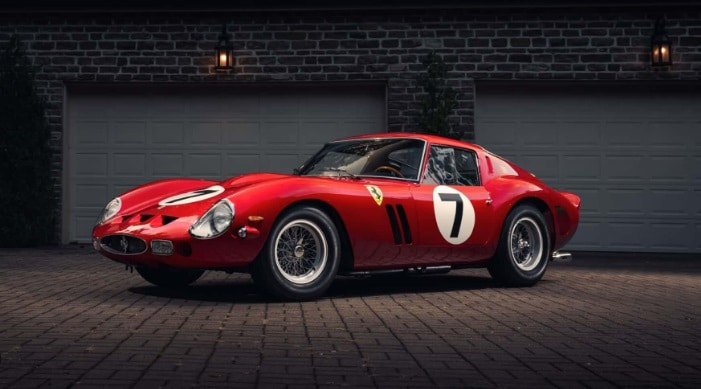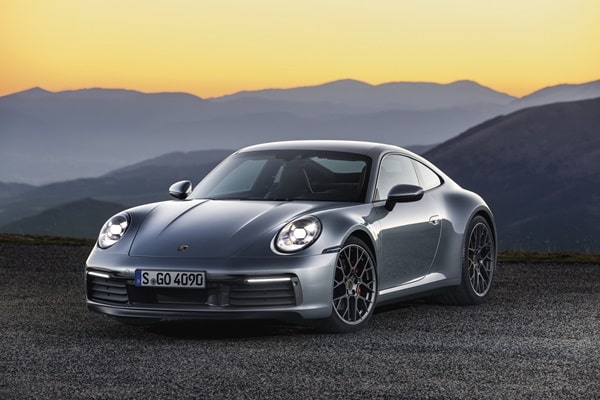Embarking on a journey through the annals of automotive history reveals a series of vehicles that did more than just transport people where they needed to go—they became emblematic of the eras they emerged from, capturing the zeitgeist of their respective generations. These classic cars, with their groundbreaking designs and technological innovations, not only revolutionized the automotive industry but also cemented their places in the cultural lexicon. They are celebrated not just for their mechanical achievements but for the way they mirror the societal shifts, technological progress, and aesthetic values of their times. This exploration is a tribute to eight classic cars that defined a generation, each a chapter in the grand narrative of automotive excellence.
Contents
The Ford Model T

The Ford Model T, often hailed as the automobile that “put the world on wheels,” was a marvel of its time, introduced by Henry Ford in 1908. Its significance lies not just in its affordability but in its innovation—the introduction of the moving assembly line in 1913, which revolutionized manufacturing processes worldwide. This car made vehicle ownership accessible to the average American, transforming the Model T into a symbol of independence and mobility. It wasn’t merely a car; it was the democratization of the automobile, marking a pivotal shift in how people lived, worked, and traveled.
The legacy of the Ford Model T extends beyond its production years, influencing the development of future automobiles and manufacturing standards. It showcased the potential of mass production, allowing for the rapid dissemination of technology and goods. Moreover, its design simplicity and reliability set standards for automotive engineering, making it a beacon of innovation. The Model T remains a testament to Henry Ford’s vision of providing a practical, affordable car for the average American, embodying the spirit of an era of unprecedented growth and change.
The Mini Cooper

Introduced in the late 1950s, the Mini Cooper was a response to the fuel shortages caused by the Suez Crisis, designed to be compact and efficient yet surprisingly spacious and agile. Its innovative transverse engine front-wheel-drive layout revolutionized small car design, maximizing interior space while maintaining a diminutive footprint. This car became a British icon, symbolizing ingenuity and the minimalist “less is more” philosophy in automotive design. Its charm and practicality captured hearts worldwide, making it an emblem of British culture and engineering prowess.
Beyond its practical design, the Mini Cooper achieved legendary status through its dominance in motorsport, particularly in the Monte Carlo Rally, where it outperformed cars with significantly larger engines. This underdog story added to the Mini’s allure, proving that size was not a measure of strength or capability. Its cultural impact was further solidified through appearances in films and as a favorite among celebrities, embedding it in the popular imagination as a symbol of fun, freedom, and rebellion against the ordinary. The Mini Cooper remains a testament to the power of innovative design and its ability to defy expectations.
The Volkswagen Beetle

The Volkswagen Beetle, with its distinctive shape and rear-engine layout, was initially designed to be an affordable and simple car for the German masses. Its introduction in the 1930s marked the beginning of a journey that would see the Beetle become one of the most recognizable and beloved cars in the world. Its appeal lay in its simplicity, reliability, and the efficiency of its air-cooled engine, which made it a popular choice across various demographics. The Beetle transcended its humble beginnings to become a cultural icon, representing peace, love, and freedom to a generation in the 1960s.
As the decades passed, the Volkswagen Beetle adapted to changes in consumer tastes and environmental standards without losing its unique identity. Its enduring popularity led to the production of over 21 million units, making it one of the best-selling cars of all time. The Beetle’s iconic status is a testament to the enduring appeal of its design and its ability to connect with people on an emotional level. It is not just a car but a piece of history that continues to resonate with people around the globe, symbolizing simplicity and joy in an ever-complex world.
The Chevrolet Corvette

The Chevrolet Corvette emerged in the early 1950s as America’s answer to the European sports car, combining high performance with striking aesthetics. It was a bold statement of American automotive ambition, featuring a fiberglass body that set it apart from its contemporaries. The Corvette quickly earned a reputation for its powerful V8 engine and distinctive design, embodying the spirit of American innovation and the pursuit of speed. It became not just a car but a cultural phenomenon, capturing the essence of freedom and adventure that defined the era.
Over the years, the Corvette has evolved through numerous iterations, each refining its performance and luxury to meet the demands of its discerning audience. Its continued success lies in its ability to blend tradition with cutting-edge technology, making each model a coveted piece of automotive artistry. The Corvette stands as a symbol of American ingenuity, a testament to the relentless pursuit of excellence that drives the automotive industry forward. It remains a beacon of performance and style, inspiring generations of enthusiasts and collectors alike.
The Ford Mustang

The Ford Mustang burst onto the scene in the mid-1960s, instantly becoming a symbol of American freedom and power. This iconic muscle car, with its long hood, short deck design, and powerful V8 engine, captured the imagination of a generation craving speed and style. The Mustang’s introduction heralded a new era in automotive design, where performance and aesthetics met to create something truly special. Its appeal was universal, cutting across age and social demographics, and it quickly became a fixture in American culture, representing the spirit of adventure and the open road.
The Mustang’s influence extended beyond the highways to the racetrack and the silver screen, where it became synonymous with high-speed chases and cool, rebellious characters. Through the years, it has evolved, incorporating modern technology and design while retaining its distinctive character and appeal. The Ford Mustang remains a powerful emblem of American automotive culture, embodying the relentless pursuit of freedom and performance. Its enduring popularity underscores its status as more than just a car; it is a cultural icon that continues to inspire passion and loyalty across generations.
The Porsche 911

Since its debut in the early 1960s, the Porsche 911 has stood as a paragon of sports car excellence, with its distinctive silhouette and rear-engine layout. This enduring model combines performance, usability, and style in a package that has evolved gracefully over decades. The 911’s continuous development cycle has seen it remain at the forefront of automotive technology, with each iteration refining its aerodynamics, power, and handling to set higher standards in the sports car segment. Its success on the race track, including victories at prestigious events like Le Mans, has cemented its reputation as a performance icon.
The Porsche 911 is more than just a car; it is a piece of engineering art that reflects a relentless pursuit of perfection. Its appeal lies not only in its speed and performance but also in its ability to connect with drivers on an emotional level, offering a driving experience that is both exhilarating and nuanced. The 911’s iconic status is a testament to Porsche’s dedication to excellence and innovation, making it a symbol of aspiration for enthusiasts worldwide. It represents a blend of tradition and innovation, a vehicle that continues to push the boundaries of what is possible in automotive design.
The Ferrari 250 GTO

The Ferrari 250 GTO, produced in the early 1960s, epitomizes the essence of a racing legend and a masterpiece of automotive engineering. Its rarity, with only 36 units ever made, adds to its mystique and desirability among collectors and enthusiasts alike. The 250 GTO is celebrated for its perfect balance of form and function, combining stunning aesthetics with formidable performance on the race track. Its success in competitions, including the prestigious Le Mans and the Tour de France Automobile, solidified its status as one of the greatest Ferraris ever produced, embodying the passion and racing heritage of the Maranello-based automaker.
Beyond its racing accolades, the Ferrari 250 GTO has become a symbol of luxury, exclusivity, and the zenith of automotive craftsmanship. Its soaring auction prices reflect its iconic status and the deep emotional connection it fosters with collectors and aficionados. The 250 GTO represents a golden age of motoring, where beauty, speed, and engineering prowess converged to create a vehicle that transcends time. It remains a beacon of automotive excellence, capturing the imagination of those who appreciate the artistry and passion that define the Ferrari brand.
The Jaguar E-Type

When the Jaguar E-Type was unveiled in the early 1960s, it was heralded as “the most beautiful car in the world” by none other than Enzo Ferrari. Its sleek lines, long hood, and distinctive design made it an instant classic, embodying the optimism and innovation of the era. The E-Type’s combination of beauty, high performance, and competitive pricing set new standards in the sports car segment. Its 3.8-liter inline-six engine delivered impressive speed and agility, making it a favorite among both enthusiasts and racing drivers. The E-Type was not just a car; it was a work of art that represented the pinnacle of British automotive design.
Over the years, the Jaguar E-Type has retained its allure, becoming a coveted collector’s item and an enduring symbol of 1960s elegance and performance. Its legacy is not merely in its stunning appearance or its engineering achievements but in its impact on automotive design and culture. The E-Type’s influence can be seen in the generations of sports cars that followed, each aspiring to the blend of form and function it so effortlessly achieved. It remains a testament to the vision and craftsmanship of Jaguar, a timeless icon that continues to captivate and inspire.
Classic Cars, Timeless Inspirations
As you’ve journeyed through the stories of these eight classic cars, it’s clear that their impact goes beyond mere transportation; they have driven cultural shifts, inspired generations, and redefined automotive excellence. Each model tells a story of innovation, passion, and the pursuit of perfection, reminding the world that cars are not just machines but symbols of dreams and aspirations. Let’s continue to celebrate and preserve these iconic vehicles, ensuring their legacy inspires future generations of car enthusiasts and engineers.


